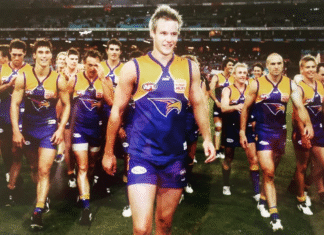
Whether your workout plan is a bodyweight routine in the park or a 5K, warming up should be the first thing on the to-do list (after that pre-workout snack).
But what’s the ideal way to warm up?
Experts agree a warm-up should heat and loosen the body, and prepare the mind for action.
But there are a few moves you should avoid too.
When it comes to strength training and a variety of sports, coaches often think of their warm-ups as training preparation—using techniques such as foam rolling and movement practice to get the gears aligned. Enter: The dynamic warm-up.
This popular warm-up approach gets all the joints moving one at a time, then all together, taking the body through progressive movements that loosen and stretch your muscles.
Classic dynamic moves include walking lunges, toe touches, and high knees.
We perform optimally and better avoid injury after a warm-up that does what its name promises: warm us up.
And while a marathoner doesn’t warm up like a powerlifter (the same way an opera singer doesn’t warm up like a modern dancer), there could be some similarities.

For endurance or cardio routines, research shows a dynamic approach, including dynamic stretching—active range of motion movements that tend to be similar to what you’ll do in your workout, can improve performance.
Some experts even suggest performing a few short intervals of the planned exercise at a lower intensity (for example: brisk walking before running, or bodyweight squats before adding weight).
As for static stretching, leave it for the cool-down. Numerous studies have shown that it can hinder performance and increase the risk of injury.
Every warm-up will be different, depending on your fitness level and the goal of your workout. But as a jumping off point, start with these four basic goals for every warm-up.
1. Loosen up.
Warm your joints, muscles, and prep your body for exercise with mobility movements. If you’ve got one, now is also a great time for foam rolling. Start by rolling your back, then hit every section of the legs, glutes, and hip flexors.
2. Get your heart pumping.
Increased heart thumping warms up your muscles and switches on your nervous system. Jog, slowly row, or ride a bike on low resistance. Just be sure you’re able to converse with your workout buddy (or sing along to your Spotify playlist).
3. Do some dynamic stretches.
Stretch your warm muscles, but don’t hold it. Remember: Static stretching during a warm-up can actually hinder your performance. Instead, do dynamic stretching, which involves continuously moving through a range of motion. For instance, you can make big arm circles in both directions, kick your legs forward, or simply touch your toes and then reach for the sky. The key is to not hold in any position.
4. Practice.
Move through the exercises planned for that day’s workout at a lower intensity. Have a long, hard run ahead? Warm up with a few technique drills. Back squats? Start with bodyweight squats or by holding an empty bar. Practicing the movement patterns teaches muscle memory (a.k.a. neuromuscular adaptation) and continues to prepare your body for action.
Last Updated on Apr 2, 2016
The news team for Gay Nation love tips from our readers. Got tips or a news story that you would like published? Go here to tell us something.
Visit the Gay Nation store Now





























